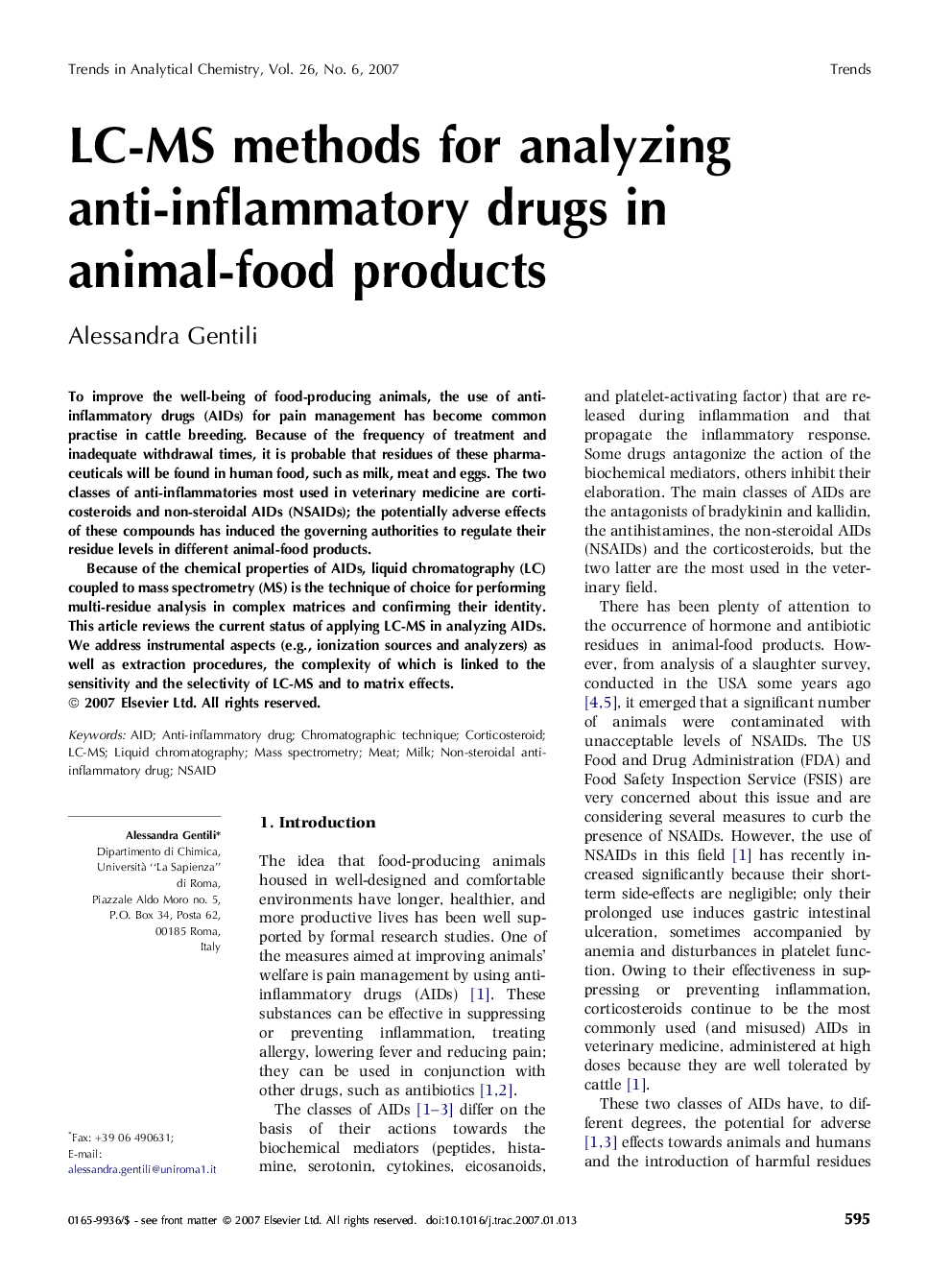| Article ID | Journal | Published Year | Pages | File Type |
|---|---|---|---|---|
| 1249463 | TrAC Trends in Analytical Chemistry | 2007 | 14 Pages |
To improve the well-being of food-producing animals, the use of anti-inflammatory drugs (AIDs) for pain management has become common practise in cattle breeding. Because of the frequency of treatment and inadequate withdrawal times, it is probable that residues of these pharmaceuticals will be found in human food, such as milk, meat and eggs. The two classes of anti-inflammatories most used in veterinary medicine are corticosteroids and non-steroidal AIDs (NSAIDs); the potentially adverse effects of these compounds has induced the governing authorities to regulate their residue levels in different animal-food products.Because of the chemical properties of AIDs, liquid chromatography (LC) coupled to mass spectrometry (MS) is the technique of choice for performing multi-residue analysis in complex matrices and confirming their identity. This article reviews the current status of applying LC-MS in analyzing AIDs. We address instrumental aspects (e.g., ionization sources and analyzers) as well as extraction procedures, the complexity of which is linked to the sensitivity and the selectivity of LC-MS and to matrix effects.
